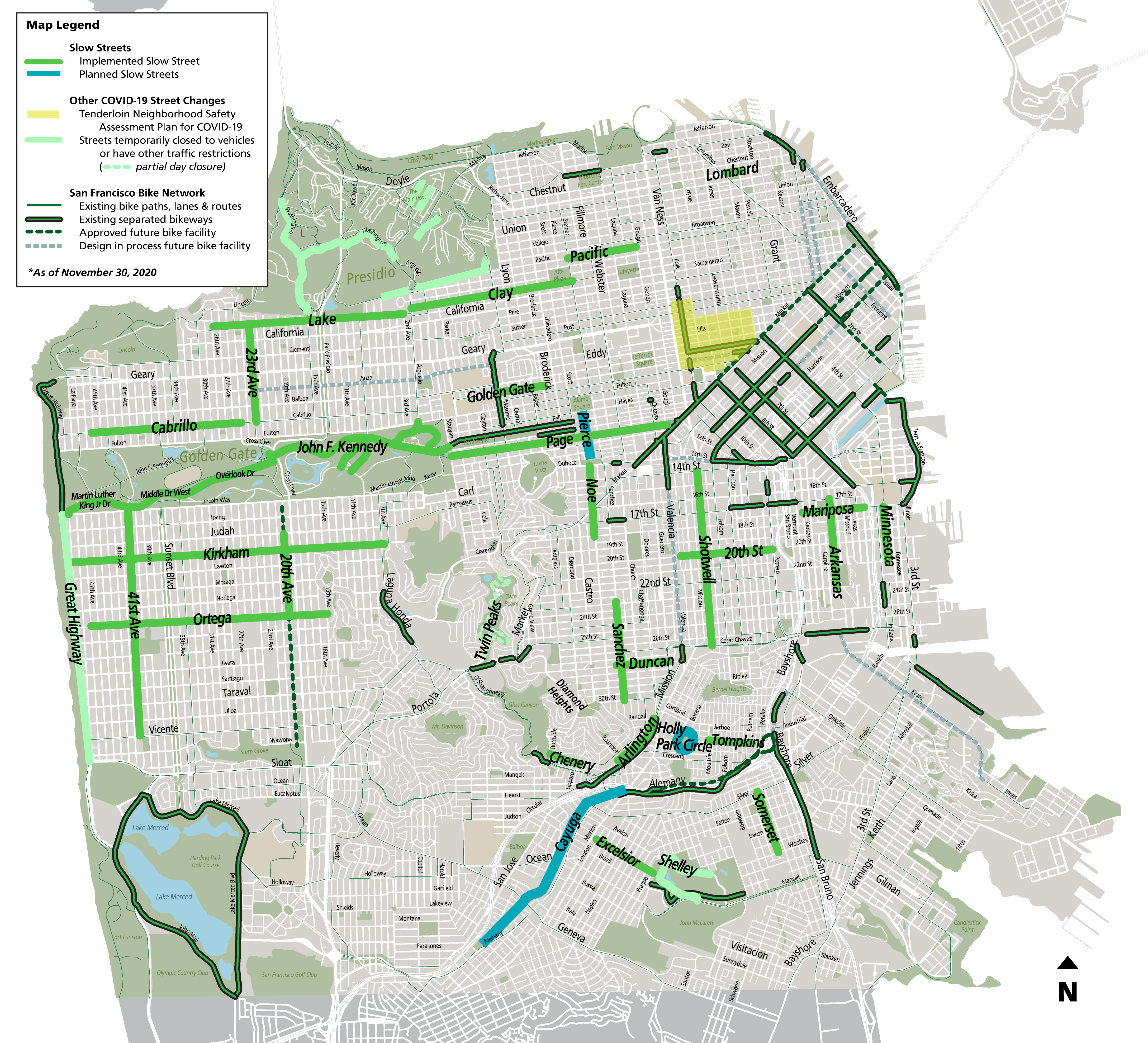Infrastructure

San Francisco Slow Streets
Infrastructure is central to our daily lives yet often hidden from view. The Capital Plan is critical to taking care of the infrastructure we already have and investing in systems that meet the challenges of the future.
Lifelines
The Lifelines Council of San Francisco brings together public and private sector infrastructure operators to share information, ideas, and data that provide the basis for a coordinated response to hasten the recovery, restoration and viability of San Francisco following a major earthquake. In 2014, the Council published an Interdependency Study, which identified a series of actions to improve utility reliability and post-disaster functionality in San Francisco. Building on that study, the Lifelines Restoration Performance Project, completed in 2020, developed for the first time, a common set of expectations for when lifelines systems serving San Francisco will restore service following a major earthquake and sets restoration goals for each system. The plan identifies projects, policies, and actions needed to close the gap between current and target restoration times.
Waterfront Resilience
The Embarcadero Seawall, which spans three miles of shoreline from Fisherman’s Wharf to Mission Creek, needs to be strengthened to address seismic risks, floods, and sea level rise. Recognizing the significant consequences to the city, the region, the state, and the many community members and businesses that depend on the Seawall’s integrity, the City initiated the Seawall Program, led by the Port of San Francisco. Phase I will implement the most immediate life safety upgrades to the Embarcadero Seawall at select locations and plan for additional work to ensure a resilient waterfront for 2100 and beyond. The Port will implement the Seawall Program over several decades and will require federal, state, and local permitting and funding to complete the effort. For more information please see the Neighborhood and Economic Development Chapter.
Transportation
The COVID-19 crisis has greatly impacted public transit in San Francisco and the SFMTA has developed the Transportation Recovery Plan (TRP) to strategically respond to the crisis. The TRP makes the best use of the SFMTA’s limited resources to adapt its transportation services to minimize risk to its employees and the public, meet changing health guidance and transportation needs and support a strong economic recovery. Among TRP measures are strategies that enable efficient modes of transportation, like the Slow Streets Program, temporary emergency transit lanes, and temporary bike improvements. SFMTA’s Slow Streets program is designed to provide more space for social distancing by limiting through traffic on certain residential streets. Throughout the city, over thirty corridors have been planned or implemented as a Slow Street by adding signage and other improvements to these streets to help minimize through vehicle traffic and prioritize walking/biking. This program also helps the City towards its Vision Zero goals of prioritizing street safety and eliminating traffic deaths by 2024.
Vision Zero SF uses data-driven strategies to protect people from serious injury or death by crash with safer roads, slower speeds, improved design, and education and enforcement to support safer road behaviors. In addition to strengthening and adapting infrastructure and making our right-of-way safer, the City is also working to make sure that the transportation network supports San Franciscans’ vision for the future. With the help of thousands of residents who participated in focus groups, surveys, and targeted outreach, ConnectSF developed a vision, goals, and objectives that will guide the city’s long-range transportation planning. For more information on these efforts, please see the Transportation chapter.

